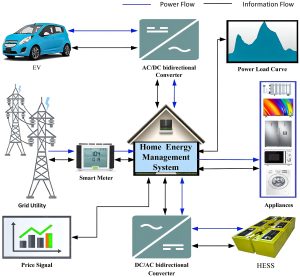How does the 2023 NEC handle load calculations with Energy Management Systems?
Overview
Energy Management Systems are increasing in popularity. One example of use would be the use of daylight harvesting systems. Sensors are placed near windows to measure the amount of light entering, and will adju st the lighting level depending on the amount of natural light entering the workspace. Thermostats that automatically adjust based on outside temperatures would be another example. The 2023 NEC has included a new section (220.70), which addresses the load calculation requirements for occupancies with such energy management systems. The point of this new section will allow for safer utilization of alternative energy sources by managing what loads may draw power at any given time.
st the lighting level depending on the amount of natural light entering the workspace. Thermostats that automatically adjust based on outside temperatures would be another example. The 2023 NEC has included a new section (220.70), which addresses the load calculation requirements for occupancies with such energy management systems. The point of this new section will allow for safer utilization of alternative energy sources by managing what loads may draw power at any given time.
Applying the 2023 Code
The 2023 NEC adds section 220.70, which did not exist in past editions. This new section covers Energy Management Systems (EMSs). It specifies that if an energy management system is utilized to limit feeder or service current (in accordance with 750.30), the value equal to the maximum ampere setpoint in the energy management system shall be permitted to be used in the load calculation for the feeder or service. In other words, if an energy management system is implemented to ensure that a service or feeder does not exceed a certain ampere rating, the feeder/service can be sized/calculated per that maximum setpoint. This will ensure that energy cost remain stable, and allows for alternative energy systems to safely meet load demands. It is worth noting that section 220.70 also clarifies that the maximum setpoint value in the EMS shall be considered a continuous load.
What’s New for the 2023 NEC?
2020 NEC
In the 2020 NEC Section 220.70 did not exist.
2023 NEC
In the 2023 NEC Section 220.70 read as follows:
220.70 Energy Management Systems (EMSs).
If an energy management system (EMS) is used to limit the current to a feeder or service in accordance with 750.30, a single value equal to the maximum ampere setpoint of the EMS shall be permitted to be used in load calculations for the feeder or service.
The setpoint value of the EMS shall be considered a continuous load for the purposes of load calculations.
